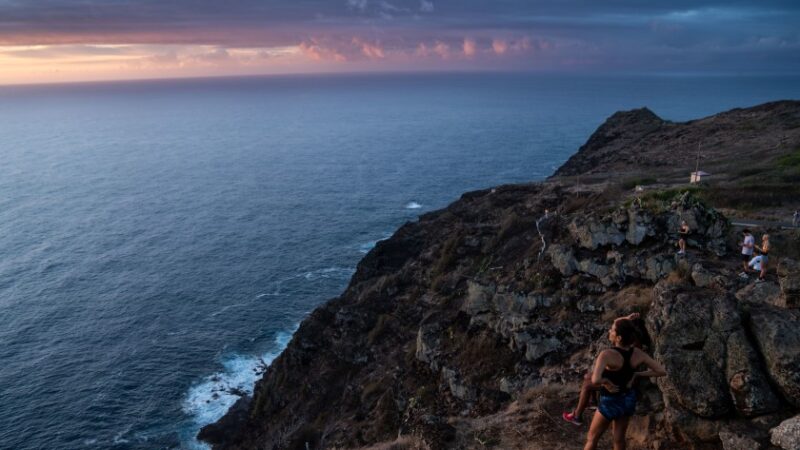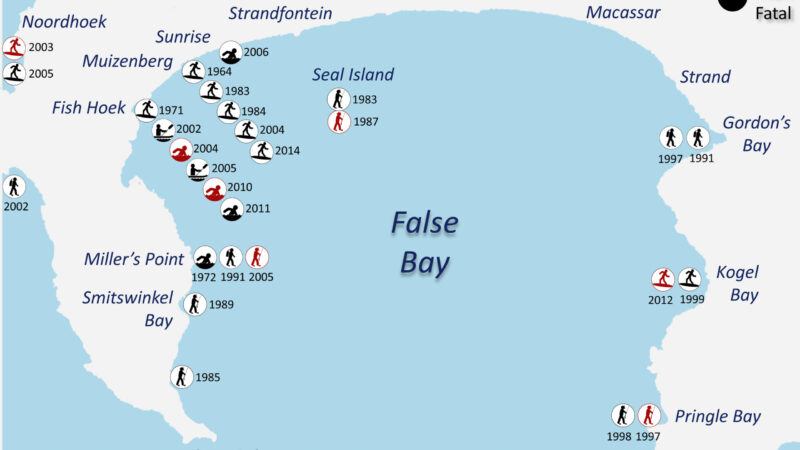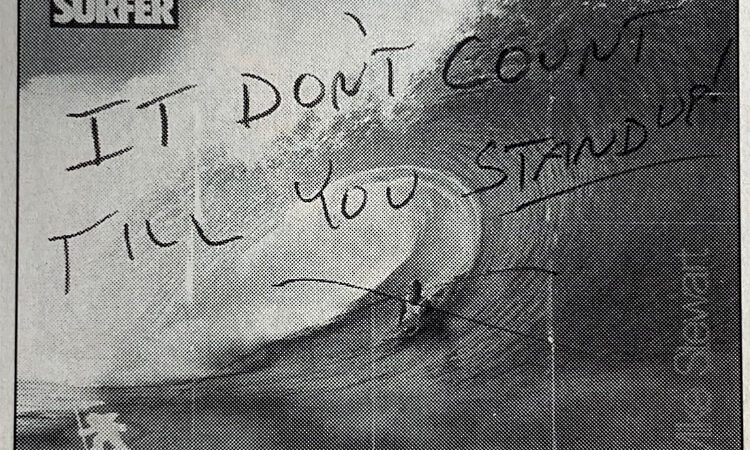Just me and the sea
The link between surfing and mindfulness is another reason so many people are attracted to the sport these days. In Niyama, I see exactly why. I paddle out and wait for nature to deliver me some waves. On the water, there are no WhatsApp beeps or emails to check; it’s just me, my board and the sea. Immersed in nature, it’s a rare dose of peace that I cherish — and one that’s becoming increasingly hard to find in the modern world. “Surfing is the perfect form of meditation,” says Ed Templeton, of Soul and Surf. “When you’re in the water, there’s nowhere to go or be, but in the now. You are able to connect to a moment in a way that lots of people find much harder to do on dry land.”
So, it makes sense that surfing goes hand in hand with another increasingly popular activity, which has mindfulness at its heart: yoga. Soul & Surf, and Ride on Retreats are just two of many operators offering combined surfing and yoga packages. “Both require mental focus,” explains Natalie Fox, a surf coach and yoga instructor at Soul & Surf’s base in Lagos, Portugal. And not only does yoga develop the strength and flexibility you need for surfing, some of the postures also use identical muscles. “Cobra pose is similar to the prone position you use just before you pop up on your board — you need to engage your glutes in both to prevent lower back pain,” Natalie says. Some surfers also use yoga’s deep metronomic breathing, or pranayama, to increase lung capacity, which helps during big wipeouts.
At Niyama, surfing was only introduced in 2016 — four years after the resort opened — when a surfer chef spotted the island’s potential to become a destination for the sport. A dedicated beach complete with a surf shack cocktail bar was added, and it’s now the only luxury resort in the Maldives to have a surf point breaking directly onto its island. Guests can also have lessons in the channel or take a speedboat or seaplane transfer to other local surf spots. “The resort was initially unsure if they wanted to have surfing here,” says Nathan Kemp, surf development director at Niyama. “Surfers were seen as beach bums. But the image of surfing is changing — it has a global appeal now. We’re seeing the learn-to-surf market grow, in particular.”
One of the reasons surfers choose Niyama is that its waves are both world-class and blissfully uncrowded. With the surge in popularity of the sport, it’s something that is increasingly hard to find. At sunset, I head to the beach bar near ‘Vodi’, the resort’s left-hand break. Despite perfect barrelling waves, just five surfers are out, including Sofía Mulánovich, a former world champion from Peru. “This is one of the best places I’ve surfed,” she tells me later, as the evening sky streaks with pink and gold. “Where else can you get perfect, empty waves in such a beautiful location?”
It’s no short hop to the Maldives (you need to take two planes plus a seaplane to reach Niyama from the UK), but its remoteness sets it apart. “The Maldives is the pinnacle of surf trips,” says Lucy Campbell, a professional surfer and six-time British national champion. “But there are other places that are great for surfing and easier to reach. Croyde [in North Devon] is one of my favourite UK spots.” Lucy believes advancements in wetsuit design have played a part in boosting the popularity of the sport, enabling people to stay in the water for longer, even in British winters. Fistral Beach, in Newquay, Cornwall, remains the main hub of UK surfing, with a string of surf schools offering lessons and board hire, but there are beloved spots nationwide; places such as Saltburn-by-the-Sea, in North Yorkshire, for example.
A surf trip needn’t break the bank. Portugal, Tenerife and Lanzarote are popular affordable European destinations. “Surfing is one of the most cost-effective hobbies you can have,” says Max Hepworth-Povey, of Ticket To Ride. “A decent secondhand surfboard costs around £250 and a wetsuit £150. And you can get three years out of these if they’re looked after.” And unless you book lessons, the surfing itself is free. And even if you do, it doesn’t have to be pricey. Excluding flights, a week at Ticket To Ride’s Sri Lanka retreat, for instance, works out at £84 a night (£588 in total), including most meals and surf tuition.
Go with the flow
The growth of surfing shows no signs of abating, and it has become more accessible than ever, with an increasing number of surf schools popping up. What’s more, the development of inland surf facilities has the potential to open up the sport to a new audience of urban surfers. Critics claim these wave pools are anathema to the at-one-with-nature spirit of surfing and that prices could put off newcomers. They may have a point. For example, Surf Snowdonia, in North Wales, charges £35-50 per hour (excluding £10 board hire, with a 90-minute lesson with 60-minute water time costing £50-70 for adults); The Wave, in Bristol, is similarly priced. But they have their advantages, too.“Only a small proportion of us can regularly access the sea when there’s a decent break happening,” says Ben Powis, commercial and operations director at not-for-profit members organisation Surfing England. “The development of inland surf facilities is going to be transformational for the sport.”
Back in the channel at Niyama, my breathing quickens as I spot my wave and begin to paddle for it. When I’m up and riding, I feel a surge of adrenalin as the board accelerates under my feet, and the tropical scenery rushes by. I can’t hold back the whoops or wipe the smile off my face. Neuroscientists have nailed down what this feeling is. They’ve found that when we’re in an optimal state of performance, creativity, and enjoyment — which is known in science as the ‘flow state’ — a cocktail of chemicals blends in our brains to, essentially, bring us joy. In surfing lingo, this flow state is known as ‘stoke’. “Getting that feeling is why we surf, and we get stoked because we surf,” says Max Hepworth-Povey, of Ticket To Ride. “It’s a beautiful cycle.” As I paddle out to catch another wave, I can’t help but agree.

The growth of surfing shows no signs of abating, and it has become more accessible than ever.
photo by Getty Images
Four steps to get surf-fit fast
1. Go surfing!
Sounds obvious, but the best way to prep for a surf trip is to surf as much as possible before you go, so you’re less likely to get fatigued. If you can, head to your nearest break to get time in the water. If you’ve never surfed, try bodyboarding to get a feel for it.
2. Embrace exercise
Surfing requires strength and flexibility plus a base level of cardiovascular fitness. Do 20 press-ups per day for a month, and yoga stretches like cobra and boat pose (which work the core). Squats and burpees are great — a burpee is essentially a surf pop-up with straight legs. If you jog, add intervals and drills.
3. Focus on your breath
Breathing techniques, meditation and sports psychology all play a role in surfing, particularly at higher levels. Pranayama breathing (used in yoga), can help you feel present, avoid a negative spiral of fear and increase lung capacity, while freediving courses work on breath-holding techniques.
4. Swot up
Visualisation is a key tool used in sports psychology and by professional surfers. Watch as much surfing footage as possible. Try and familiarise yourself with how it looks to ride waves. Look for different types of wave and see how different surf spots attract different styles of surfing.
Ready to go? Here’s how…
Niyama Private Islands offers Beach Villas (sleeping two) from $886 (£491)per night, B&B. An hour-long beginner’s surf lesson costs from $90 (£73).
Published in the November 2019 issue of National Geographic Traveller (UK)
Find us on social media





Recent Comments